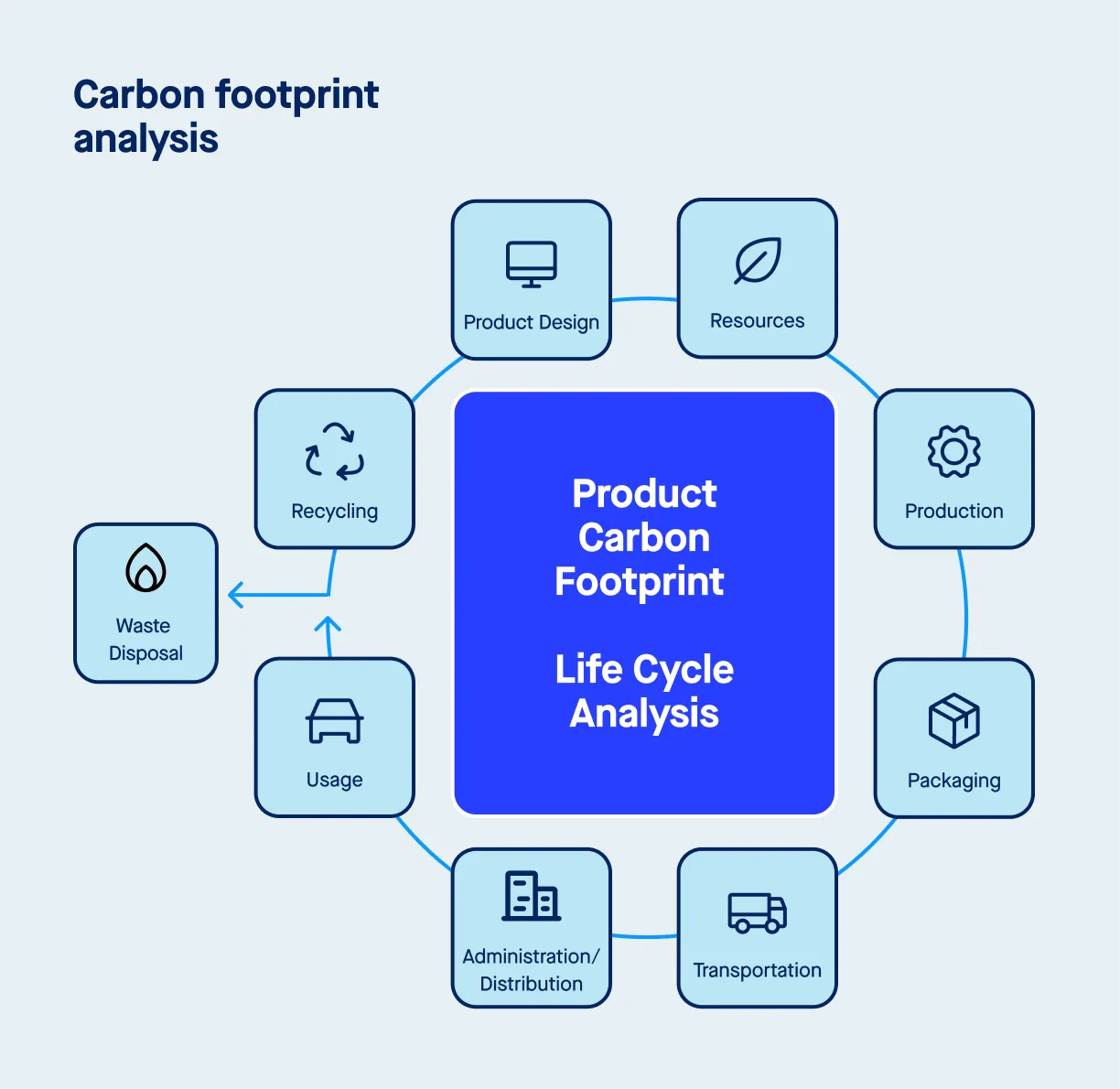The urgency to address climate change has placed a spotlight on carbon emissions, CO2 emissions, and other greenhouse gases, which are driving global warming. For UK businesses, understanding and measuring emissions produced from burning fossil fuels is not only a regulatory requirement in some cases but also a crucial step towards sustainability and long-term success. This article explores what emissions are, the different scopes of emissions, and why UK businesses should prioritize measuring their carbon impact. It also examines relevant regulations and how carbon accounting software can assist in managing cumulative emissions effectively.
Understanding greenhouse gas emissions
Greenhouse gas emissions refer to the release of gases into the atmosphere that trap heat and contribute to global warming. A major component of these emissions is global carbon dioxide emissions, which have significantly increased since the start of the industrial era and are a key driver of climate change. These gases include carbon dioxide (CO2), methane (CH4), nitrous oxide (N2O), and fluorinated gases (F-gases). Greenhouse gas emissions are a significant concern due to their impact on the environment, human health, and the economy. Understanding greenhouse gas emissions is crucial for developing effective strategies to reduce their impact and mitigate climate change.
Main sources of greenhouse gas emissions
The main sources of greenhouse gas emissions are:
- Fossil fuel combustion: The burning of fossil fuels such as coal, oil, and natural gas for energy and transportation releases large amounts of CO2 into the atmosphere. This is one of the largest contributors to global greenhouse gas emissions.
- Land use changes: Activities like deforestation, land degradation, and other changes in land use lead to the release of stored carbon into the atmosphere, significantly impacting total greenhouse gas emissions.
- Agriculture: The production of meat, especially beef, and other animal products leads to the release of methane and nitrous oxide. These emissions are a major part of the agricultural sector’s contribution to global emissions. Agricultural activities contribute to direct emissions, such as those from rice production and livestock farming, which are significant sources of greenhouse gases.
- Industrial processes: The production of cement, steel, and other industrial activities release large amounts of greenhouse gases. These processes often involve the burning of fossil fuels and other greenhouse gases.
- Waste management: The decomposition of waste in landfills releases methane and other greenhouse gases. Effective waste management practices are essential to reduce these emissions.
What are the three scopes of emissions?
To measure emissions comprehensively, businesses categorize them into three scopes: Scope 1 includes direct emissions and direct greenhouse gas emissions produced by an organization.
Scope 1: Direct carbon dioxide emissions
These are direct emissions produced directly by an organization, including direct carbon dioxide emissions. Examples include emissions from on-site energy production, company-owned vehicles, and industrial processes.
Scope 2: Indirect emissions from fossil fuel combustion
Scope 2 covers emissions associated with the energy a business consumes but does not generate itself, such as purchased electricity, steam, or heating.
Scope 3: Other indirect emissions
Scope 3 encompasses all other emissions related to a business’s operations, including those from its supply chain, employee commuting, product use, and waste disposal. These are often the largest source of cumulative emissions for many organizations.
Why should UK businesses measure carbon emissions?
Understanding and managing emissions is essential for businesses in the UK, regardless of their size or industry. Global carbon dioxide emissions have been significantly impacted by various human activities, and UK businesses play a role in this global issue. Tracking emissions growth is essential for understanding the impact of business activities on climate change. Here’s why:
Environmental responsibility
Businesses play a significant role in combating climate change by reducing their carbon footprint and limiting their impact on the environment. Measuring emissions is the first step in identifying opportunities to cut back on energy consumption and switch to renewable sources of energy.
Regulatory compliance
The UK government has implemented various policies and regulations to reduce emissions, such as the Streamlined Energy and Carbon Reporting (SECR) framework and the Energy Savings Opportunity Scheme (ESOS). By measuring emissions, businesses can ensure they remain compliant and avoid penalties.
Competitive advantage
Businesses that actively measure and reduce emissions are better positioned to meet customer expectations and access new markets. Many organizations, especially in public procurement and large supply chains, now require suppliers to report on their greenhouse gas emissions and provide sustainability information.
Financial benefits
Identifying energy-intensive activities can help businesses lower their energy costs and reduce reliance on fossil fuels, thereby addressing both carbon emissions and CO2 emissions. Understanding per capita emissions can help businesses identify economic disparities and target reduction efforts more effectively. Additionally, measuring emissions enables organizations to make strategic investments in energy efficiency and other green technologies.
Emissions by sector
Greenhouse gas emissions can be attributed to various sectors of the economy. The main sectors responsible for emissions are:
Energy: The energy sector is the largest contributor to greenhouse gas emissions, primarily due to the combustion of fossil fuels for electricity and heat generation.
Industry: The industrial sector is another significant emitter, with emissions coming from processes such as cement production, steel manufacturing, and chemical processing.
Transportation: The transportation sector, including road, air, and maritime transport, is a substantial emitter of greenhouse gases, mainly due to the combustion of fossil fuels.
Agriculture: The agriculture sector is a significant emitter of greenhouse gases, primarily due to livestock production and the use of synthetic fertilizers.
Waste: The waste sector is also a contributor to greenhouse gas emissions, mainly due to the decomposition of organic waste in landfills.
Calculating and reporting emissions
Methods for estimating emissions
There are several methods for estimating greenhouse gas emissions, each suited to different contexts and levels of detail:
Bottom-up approach
This method involves estimating emissions from individual sources, such as power plants, vehicles, and industrial processes. It provides detailed insights into specific emission sources and is useful for targeted reduction strategies.
Data sources
The data on greenhouse gas emissions is sourced from various organizations and databases, including:
Intergovernmental Panel on Climate Change (IPCC): The IPCC provides comprehensive data on greenhouse gas emissions and their impact on the environment.
United Nations Framework Convention on Climate Change (UNFCCC): The UNFCCC provides data on greenhouse gas emissions and their mitigation strategies.
International Energy Agency (IEA): The IEA provides data on energy-related greenhouse gas emissions and their mitigation strategies.
National Oceanic and Atmospheric Administration (NOAA): NOAA provides data on greenhouse gas emissions and their impact on the environment.
Top-down approach
This method involves estimating emissions from national or regional levels using data on energy consumption, population, and economic activity. It offers a broader perspective on emissions and is often used for policy-making and large-scale assessments.
Hybrid approach
Combining the bottom-up and top-down approaches, this method provides a comprehensive estimation of emissions. It leverages detailed source data and broader economic indicators to offer a balanced view.
Life cycle assessment
This method estimates emissions from the production, transportation, and disposal of products. It helps businesses understand the full environmental impact of their products and identify opportunities for improvement across the supply

Carbon footprint analysis
This method involves estimating emissions from individual sources, such as power plants, vehicles, and industrial processes. It provides detailed insights into specific emission sources and is useful for targeted reduction strategies. By focusing on direct emissions, such as those from rice production and livestock farming, this approach helps in identifying and addressing the significant contributions.
What are the UK regulations related to emissions reduction?
Streamlined Energy and Carbon Reporting (SECR)
The Streamlined Energy and Carbon Reporting (SECR) framework is a regulatory requirement aimed at increasing transparency and promoting accountability for energy use and greenhouse gas emissions among large UK businesses. Under SECR, organizations are required to measure, report, and disclose their Scope 1 and Scope 2 emissions annually, along with some Scope 3 emissions, such as those related to business travel. Companies must also include details of their energy consumption and energy efficiency actions in their annual reports.
SECR applies to large companies and LLPs that meet specific criteria, including having at least 250 employees, an annual turnover exceeding £36 million, or a balance sheet total exceeding £18 million. The framework encourages businesses to identify areas where energy use can be reduced, helping them cut costs and minimize their environmental impact.
Energy Savings Opportunity Scheme (ESOS)
The Energy Savings Opportunity Scheme (ESOS) is another key regulation designed to improve energy efficiency and reduce emissions in large UK organizations. Under ESOS, qualifying businesses must conduct comprehensive energy audits every four years. These audits identify energy usage patterns, highlight inefficiencies, and recommend cost-effective measures to lower energy consumption and emissions produced.
ESOS applies to organizations that employ at least 250 people, have an annual turnover exceeding €50 million, or a balance sheet exceeding €43 million. Although ESOS does not mandate the implementation of audit recommendations, businesses can achieve significant financial savings and emissions reductions by acting on these insights. The scheme aligns with broader efforts to transition to cleaner energy sources and reduce the reliance on fossil fuel combustion.
UK Emissions Trading Scheme (UK ETS)
The UK Emissions Trading Scheme (UK ETS) is a market-based approach to reducing greenhouse gas emissions. This cap-and-trade system sets a limit, or cap, on the total amount of emissions that participating industries can produce. Businesses are allocated or can purchase emissions allowances, which they can trade with other participants if they emit less than their allowance or require additional credits.
The UK ETS currently applies to energy-intensive industries, power generation, and aviation. By placing a price on emissions, the scheme incentivizes businesses to adopt cleaner technologies and invest in energy-efficient processes. The cap on emissions is gradually reduced over time, contributing to the UK’s net zero commitments and encouraging businesses to move toward renewable energy sources and sustainable practices.
Net zero commitments
The UK’s legally binding target to achieve net zero emissions by 2050 has set the stage for a national transition to a low-carbon economy. Businesses are encouraged to contribute by reducing their carbon footprint, addressing historical emissions, and implementing long-term sustainability strategies. Meeting net zero commitments often involves developing detailed carbon reduction plans, switching to renewable energy sources, and adopting innovative technologies to minimize energy consumption.
The government has introduced various initiatives to support businesses in reaching net zero, including grants, incentives, and advisory services. These efforts aim to make the transition both accessible and economically viable, ensuring businesses of all sizes can play their part in reducing cumulative emissions and combating climate change.
How to choose the right emissions software for your business
Selecting the right emissions software is a critical decision for businesses looking to effectively measure, manage, and reduce their greenhouse gas emissions. Here are some key considerations to guide your choice:
Understand your business needs
Start by identifying the specific requirements of your organization. Consider factors such as the size of your business, the complexity of your operations, and the scope of emissions you need to track. For example, businesses with extensive supply chains may prioritize software that offers robust Scope 3 emissions tracking, while energy-intensive industries might need detailed insights into energy consumption and production.
Look for comprehensive features
Effective emissions software should offer a wide range of features, including:
- Automated data collection: This ensures accurate and efficient tracking of emissions produced from various activities, such as transportation, manufacturing, and energy sources.
- Emissions reporting: The software should generate detailed reports that align with regulatory requirements like SECR and ESOS.
- Scenario modeling: Advanced tools allow businesses to explore the impact of different strategies on their emissions, such as transitioning to renewable energy or adopting energy-efficient technologies.
- Integration capabilities: Look for software that integrates seamlessly with your existing systems, such as accounting or ERP platforms, to streamline data sharing.
Prioritize user-friendliness
Choose software with an intuitive interface and straightforward navigation. A user-friendly platform minimizes the learning curve for your team and ensures that emissions data can be easily accessed, understood, and acted upon.
Ensure scalability
As your business grows, so will the complexity of your emissions tracking needs. Select software that can scale with your operations, accommodating additional data sources, users, and reporting requirements over time.
Consider compliance and standards
Ensure that the software you choose aligns with relevant regulations and reporting standards. It should help your business comply with frameworks like SECR, ESOS, and international standards such as the Greenhouse Gas Protocol.
Evaluate support and training
Opt for a provider that offers reliable customer support and training resources. This ensures your team can make the most of the software’s capabilities and address any challenges that arise.
Assess cost-effectiveness
While cost is an important consideration, prioritize value over price. Investing in high-quality emissions software can deliver long-term benefits, including reduced energy costs, improved compliance, and enhanced sustainability performance.
Read reviews and seek recommendations
Research reviews and case studies to learn how other businesses have benefited from the software. Additionally, seek recommendations from industry peers or trade associations to identify trusted providers.
By carefully evaluating your options and selecting the right emissions software, your business can take a proactive approach to managing cumulative emissions, meeting regulatory requirements, and contributing to a sustainable future.
The way forward: Driving emissions reduction efforts
Measuring carbon emissions is a vital step for UK businesses in addressing climate change and meeting regulatory requirements. By understanding the scopes of emissions, complying with regulations, and leveraging carbon accounting software, organizations can reduce their cumulative emissions, transition to renewable sources of energy, and play a meaningful role in building a sustainable future. Whether you’re a small business or one of the biggest emitters, prioritizing emissions measurement is essential for long-term success and environmental stewardship.




